Market jitters and weak global outlook means rates should hold
A weakening outlook for the global economy and jittery financial markets do not portend well for the Australian economy. With latest estimates of inflation at 1.5 percent, below the Reserve Bank of Australia’s target band of 2-3 percent, and delayed action in raising interest rates by the US Federal Reserve, the CAMA RBA Shadow Board on balance prefers to keep the cash rate on hold, attaching a 72 percent probability to this being the appropriate policy setting. The confidence attached to a required rate cut equals 14 percent, up five percentage points from the previous month, while the confidence in a required rate hike is unchanged at 14 percent.
Australia’s unemployment rate edged down to 6.2 percent in August, according to the Australian Bureau of Statistics, although the increase in monthly employment fell by more than half compared to July and the participation rate fell to a modest 65 percent. No new data on wage growth was released.
The Australian dollar’s decline continued to just below US70¢, making Australia’s exports even more competitive. Yields on Australian 10-year government bonds have fallen further to 2.62 percent, which is very low by historical standards.
The Australian property market is still looking strong, with the construction PMI surging to 53.8 in August, from 47.1 in July. However, in the same month building permits have fallen by nearly 7 percent. The local stock market has been suffering considerable losses, the S&P/ASX200 closing below 5000 earlier this week. With heightened uncertainty affecting global capital markets, it is unlikely domestic share prices will rebound significantly.
Data on the international economy has weakened. The US Federal Reserve has delayed the highly anticipated increase in the federal funds rate, citing low inflationary pressure and fragile capital markets. Delayed action by the Federal Reserve is likely to reduce the pressure to increase the domestic cash rate. In Europe, attention has shifted from the Greek debt crisis to the unabating refugee crisis. China’s economy continues to slow, with its manufacturing sector contracting for the second month in a row.
Many experts are now expecting China’s GDP growth to fall to 6 percent. Global capital markets continue to pose threats. According to the Institute for International Finance, net capital outflows for the world’s emerging markets will be negative this year, the first time since 1988, pointing to weak growth in the region. Commodity prices remain subdued.
Consumer and producer sentiment measures paint a motley picture. The Westpac/Melbourne Institute Consumer Sentiment Index fell back to 93.9 in September, from 99.5 in August. Business confidence, according to the NAB business survey slid further, from 10 in July to 4 in August and now 1, at the same time as the AIG manufacturing and services indices, both considered leading economic indicators, continued to improve slightly.
What the CAMA Shadow Board believes
The Shadow Board’s confidence that the cash rate should remain at its current level of 2 percent equals 72 percent (down from 77 percent in September). The confidence that a rate cut is appropriate has edged up a further five percentage points from the previous month, to 14 percent; conversely, the confidence that a rate increase, to 2.25 percent or higher, is called for is unchanged at 14 percent.
The probabilities at longer horizons are as follows: six months out, the estimated probability that the cash rate should remain at 2 percent equals 25 percent (27 percent in September). The estimated need for an interest rate increase lies at 62 percent (65 percent in September), while the need for a rate decrease is estimated at 13 percent (8 percent in September). A year out, the Shadow Board members’ confidence in a required cash rate increase equals 68 percent (six percentage points down from September), in a required cash rate decrease 14 percent (9 percent in September) and in a required hold of the cash rate 18 percent (unchanged).
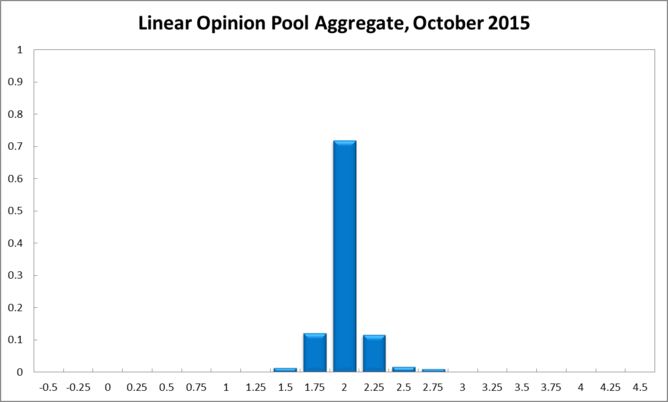


Comments from Shadow Reserve bank members
Paul Bloxham, Professor of Economics at Australian National University:
“Economic activity is gaining momentum.”
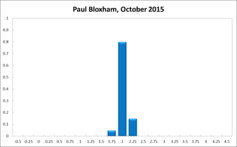
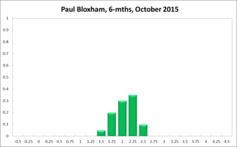
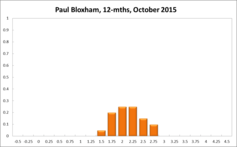
The fall in the Australian dollar in recent months means that financial conditions have loosened noticeably. There is increasing evidence that the lower currency is working to support growth. Services exports are picking up, which combined with the ongoing upswing in housing activity, is lifting business conditions and jobs growth. Although GDP is growing at a below trend pace, the broader collection of activity indicators suggests that economic activity is gaining momentum, supported by very loose financial conditions. I recommend that the cash rate is left unchanged this month and expect that the cash rate is more likely to need to rise from here than fall, although not for some time yet.
Mark Crosby, Associate Professor, Melbourne Business School:
“Address weak economic fundamentals through reform rather than monetary policy.”
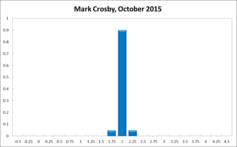
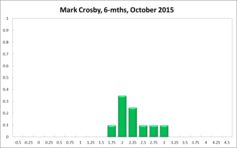
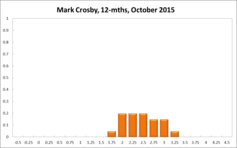
Despite recent suggestions that the RBA should cut, it would appear unwise to do so in a world where the Fed is now very likely to raise at its next meeting. While Australia’s economic fundamentals are weak, issues are more properly addressed through tax, competitiveness and other reforms than through further loosening already loose monetary policy. Issues with excessive debt remain significant in many economies, and Australia ought not to exacerbate potential problems on that front through cutting rates. The medium term question is still how rates become normalised as at least some other advanced economies raise rates.
James Morley, Professor of Economics and Associate Dean (Research) at UNSW Australia Business School:
“The RBA can probably wait until US liftoff.”
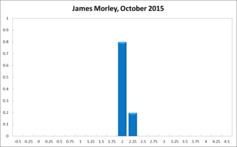

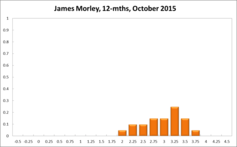
Despite the collapse of commodity prices and the effects of this on the stock market, the Australian economy has adjusted to the post-mining boom era reasonably well. This has been helped by the previous cuts in the policy rate and will continue to be supported by a weak Australian dollar. But the low interest rates also have risks in terms of large price swings in the housing market and excessive credit growth. Given all of this, the RBA should not lower the policy rate further. At the same time, the RBA can probably wait until US liftoff and more solid indications of inflationary pressures to start raising rates.
Jeffrey Sheen, Professor and Head of Department of Economics, Macquarie University, Editor, The Economic Record, CAMA:
“There is a significant risk of escalating market pessimism.”
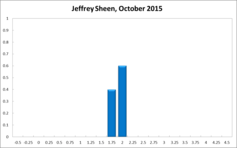

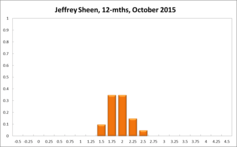
The US Federal Reserve did not change the target federal funds rate in September, given the sluggish world economy and fragile financial markets. These concerns will remain probably through to 2016. With input prices falling, inflation is unlikely to be an issue anywhere in the rich world for the forseeable future, and so there is no reason to act pre-emptively. Many central banks have cut interest rates in the last year including Australia, Canada, China, Denmark, Euro area, India, Israel, New Zealand, Norway, Russia, South Korea, Sweden and Switzerland. The time to change course is a way off, and in particular for Australia.
There are few indications of how potential GDP growth in Australia might go above the current 2 percent. A surge in China’s imports from Australia is unlikely. The new treasurer Scott Morrison appears likely to consolidate government expenditure. Business investment is still in retreat.
While some worry about a possible bubble in property prices, the September 2015 RBA Bulletin shows that there has been and remains significant structural excess demand for housing services in Australia, which is even more pronounced in NSW. The recent APRA-induced credit market tightening may have little effect on this structural excess demand, and may well dim one of the few bright lights in the economy - dwelling construction.
There is a significant risk of escalating market pessimism, which would be stoked by tightening monetary policy. For all these reasons, my recommendation has an increased weight on an interest rate cut, though no change still dominates for the October meeting.
Timo Henckel, Research Associate, Centre for Applied Macroeconomic Analysis, Australian National University
This article was originally published on The Conversation. Read the original article.





















